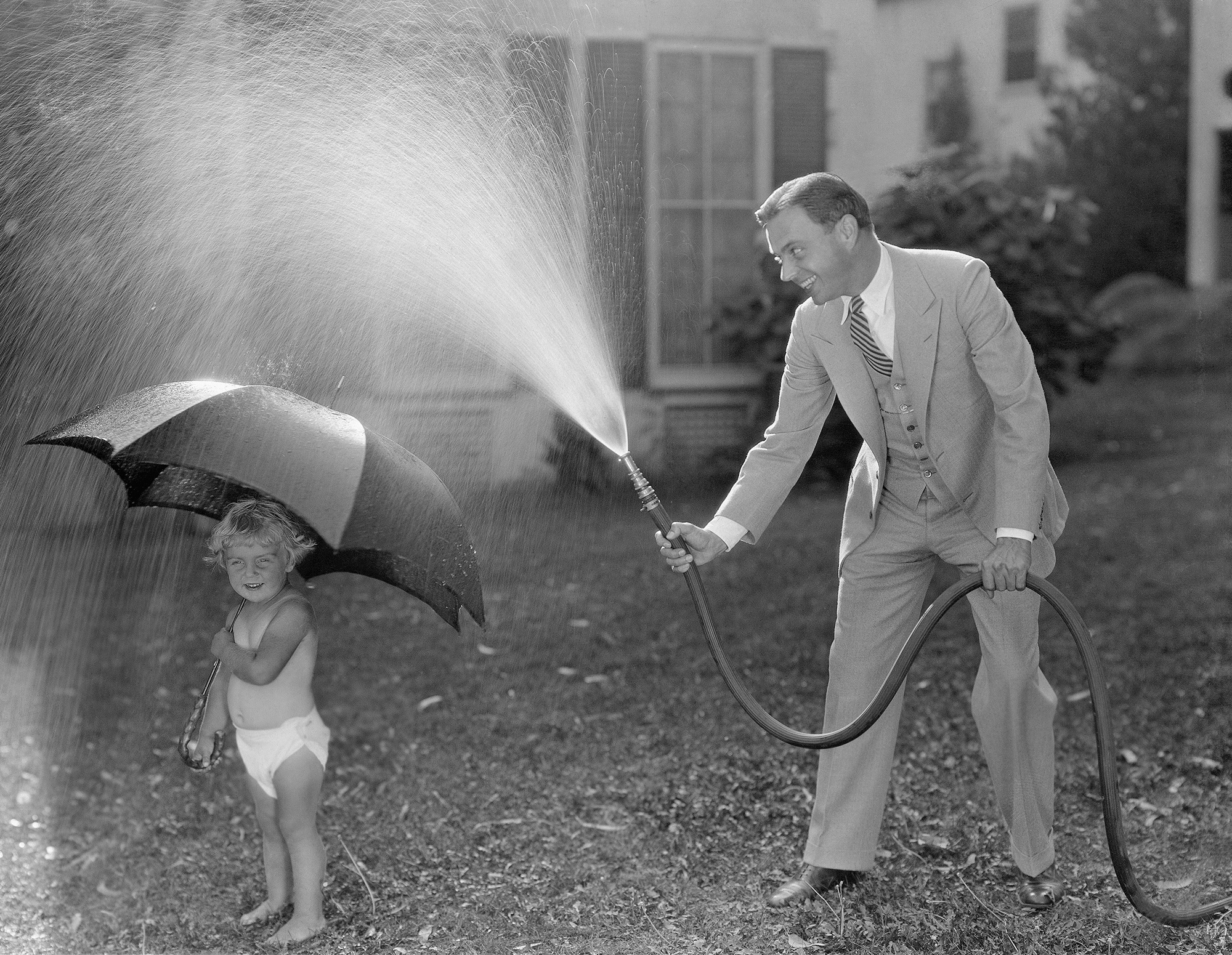
01 Jun Could you live on 100L of water per day?
It’s 7:43 in the morning. I’ve just had a blitz shower — taps go on, you soak yourself, cut the water, soap everything that needs washing and lathering, taps go on again for a quick rinse, and you’re done. I silently say farewell to all the ballads and great ideas showers used to hold.
My coffee is brewing on the stove in my little moka-pot. That’s 250 ml of water right there. I’ve become the equivalent of a weight obsessed calorie counter. Except I’m not counting calories. I’m measuring every drop. Stage 4 water restrictions are imminent. For Cape Town residents that means being limited to 100 litres of water per person per day. Not because the government knows water is a precious resource and restrictions are healthy habits. No. Because if we don’t restrict ourselves to 100 litres of water per day per person our dam levels, currently at 18% (some rumour 11%), won’t see us through the year.
So, how much is that ration of water? Could I live on 100L of water a day? Could you? Is it dire and fraught with meticulous planning or does it just require some mindful usage? Questions whirred through my mind. The only way to find out was to actually put myself to the test.
For the sake of this hypothetical (but perhaps not) water minimalism experiment, I worked, and continue to do so, on the assumption that after 100 litres of water have run out of the tap — the taps have no more water. Because I like to confine myself to boundaries and extremes. Because maybe part of me wants to test drastic measures. Also, because I couldn’t afford the R1000 — R5000 fine awaiting anyone who doesn’t adhere to the 100 litre guidelines.
If you’re of the “eh — it’ll never happen” variety, or the “I’m angry at the government for their bad planning — they must fix this while I stick my head in the very dry sand” sort, I hate to break it to you, but while I agree with you on their bad planning — getting angry isn’t going to help you months down the line when all your plants have withered and a gurgle is all that emanates from the plumbing.
So, for the sake of ingenuity and making the best of a potentially seriously crappy situation, I attempted a ‘dry-run’ of living on 100l of water, or less, per day. These are my insights on bringing water minimalism into various aspects of daily life.
First things first
It’s hard to conceive how much running water we use for something as simple as rinsing off our toothbrush. To give myself a visual, I equated 100l to 4 of the white 25l water drums folks are using to fill up water from free-running aquifers or 20 of those 5l bottles rapidly lining the supermarket isles. Could that work? On a recent stint to AfrikaBurn they recommended 5l per person per day just for drinking and cooking.
Since it is harder to maintain a perception of volume with free flowing tap water, especially once down the drain, I did this:
– Decant all 100l of tap water into gallon drums in the morning
– No touching the taps for the remainder of the day
– I started this trial with one 25l for the kitchen and one 25l for the bathroom (excluding shower and toilet use) and only need to refill them every 2–3 days.
Right — now the fun begins (she says drowning in the irony of it).
How to be clean with less water
Shower hour
It doesn’t matter how efficiently you shower or if you have a timer that goes off, if there isn’t even a dribble coming out the tap, it’s just you in the bathroom — naked and stinky. So, shorten and maximise those showers now.
These will help:
– The Boa Water Pebble helps you have stress-free 4 minute showers, shower head dependant — that’s about 25–40l of water per shower
– Stand in a tub & collect the grey water for your garden or toilet cistern
– Use only grey water friendly cleaning products so the plants at the end of the priority line can benefit too
– I have a playlist of 2 minute songs so I know not to shower longer than 2 songs
Stage 4 water restrictions are even asking people to shower every odd day and wash only the essentials. More on water wise beauty later.
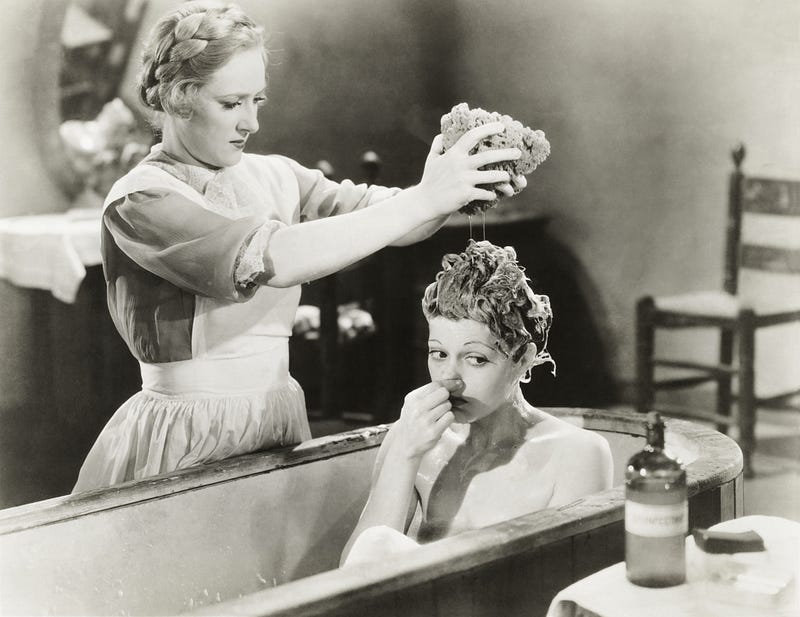
For a worst case scenario (or as part of my rationing experiment) you could go the solar shower bag route — one of my many camping gratitudes.
Making the most of a solar shower bag
A shower bag holds 5 gallons of water or about 18 litres, which isn’t enough for an emollient rich shower showcasing your best rendition of T. Swift but it’s enough to be clean. Twice. I managed two 9l showers out of one bag in the desert and that included washing long hair. Here’s how:
1. Fill the bag in the morning with your daily allotment of water (if you’re saving water elsewhere you might like two showers if you’re an active type)
2. Lay it somewhere, black side up, to heat up in the sun (if there is sun, which at this rate of a rainless autumn and winters, there may well be).
3. It only needs 3 hours of sunlight to build up to about 40 deg C which is more than hot enough to wash and rinse in. Without sun you can always leave space to add boiling water.
4. Rig up a cross bar in your shower to tie the shower bag to. If you want to get fancy you can work in a winch so you can hoist the bag up. It’s pretty heavy to hook up high when filled with water. Or be brave and shower in the garden under a tree like a true eco-warrior.
5. The water pipe attached to the bag is relatively long so either cut it much shorter so the plastic shower head is higher up, or get better at squatting low in the shower. It did my quads a world of good.
6. Same shower principles apply: wet, soap, rinse. Don’t leave it running. The pressure’s not great so you’ll need longer to get soap out of long hair.
Toilet etiquette
Regular flushing is out, full stop. If you don’t have to flush (you know what I mean) let it linger.
– Use a cistern water displacement product, like the Dry Planet which saves 1l of water space in your tank.
– You can use the grey water from your dishes and showering to refill the toilet cisterns
– I also use the water from my dehumidifier that doesn’t go on the plants.
– Keep in mind, since less water volume is going down the drainage system, Eco Toilet paper that also dissolves quicker is a must.
Enough said. And regarding toilets that don’t have cisterns — I plead ignorance.
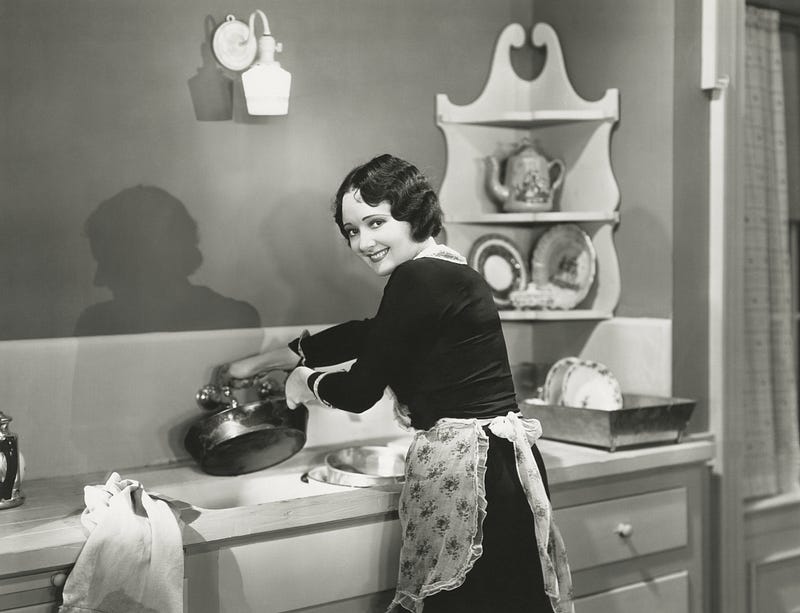
And the things that won’t work without running tap water
Dishwashers
For the time being you can obviously still use your dishwasher. According to this article on essential.com a fully loaded eco dishwasher can account for 7.5l of water usage every 2 days. And since they use far less water it bodes to save water this way.
But, there’s always a but
If no water comes out of the taps in a dreaded future scenario, your dishwasher is of no use to you.
I’ve been hand washing dishes in the bathroom amid kitchen renovations for the last while and use about 10 l for a tub every day.
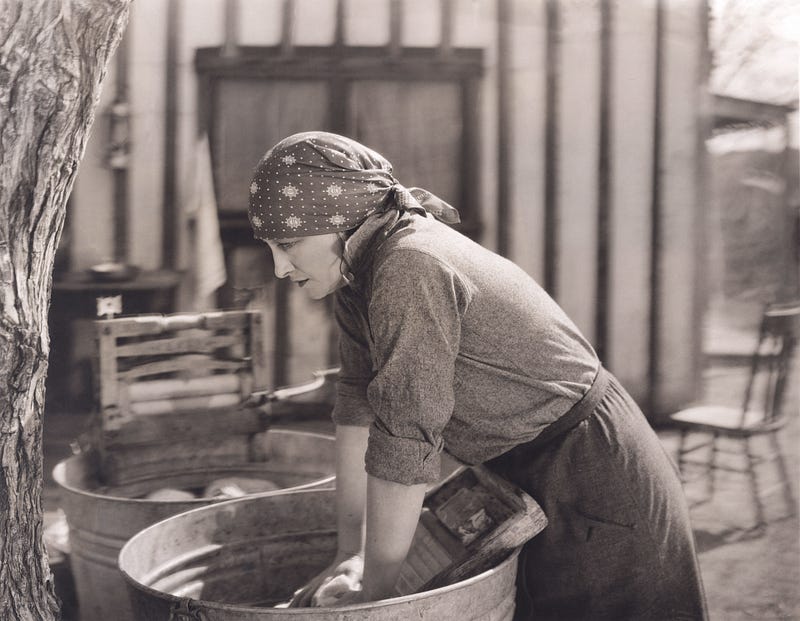
Washing machines
A washing machine uses approximately 14 litres of water and most households only need to do laundry once a week. Take the 14l out of your weekend allotment and maybe order in so you save the water on cooking.
Washing laundry in extreme measures:
1.On holidays in the Kruger, we used this method to wash our clothes during game drives. It may well come in handy:
2.Put our clothes in an ammo box in the back of the car with laundry powder or gel.
3.Secure the box to the inside of the car using bungee chords, and go about your usual driving business.
4.Your laundry is shimmied about while you drive (the more pot holes the better the washing action).
5.Back home, take out clothes and rinse in another ammo box of water and hang to dry.
6.Wear clothing that doesn’t need ironing — ironing also uses water (albeit minimal).
7.Hang it on a clothes hanger and straighten it out as much as possible. Near a dehumidifier it dries within a day on the clothes setting.
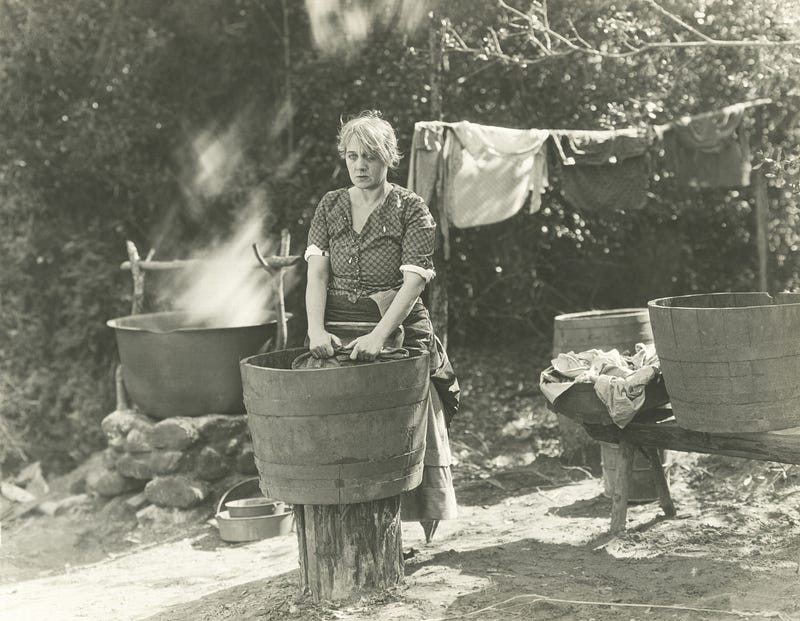
How to cook with less water
When you have a plentiful supply of something at hand, its presence becomes a fall back to your decision making. Tap on rinse, add, wash, pour — using water when we have enough becomes the full stop and comma between rambling sentences. But when your finite water supply is your sentence, every other decision revolves around how best to utilise what you have. So my thinking while making coffee looks something like this:
“Gosh, if you only had 1 cup of water, this frothy flat white becomes a luxury because of the many things that require washing — the coffee brewer, the milk frother, the cup you drank from. Tea poses none of that and the cup is easiest rinsed out.” Let’s hope it never gets to that. But the thinking still applies.
Other things to cook that require less dishes and hence less washing up water in my experience are the following:
Cooked food on the go
– Hard boiled eggs. Boil 6 at a time. (what a great on the go snack — if you’re not vegan)
– Corn on the cob. Boil these in the same water you used for the eggs.
Soup, glorious soup
A warming bowl of soup can be made quickly, mind you, by steaming some veg in pot, adding the stock and then blending it all together in the same pot. If it’s just you at home in your wooly socks and leopard print onesie you win twice — you can eat straight from the pot.
Microwave meals in recyclable containers are an option I guess. This is a two-sentence paragraph because I have no experience here, as even on the brink of the apocalypse I would rather cook my potato on a stick over an open flame than ingest my meal a-la Soylent Green.
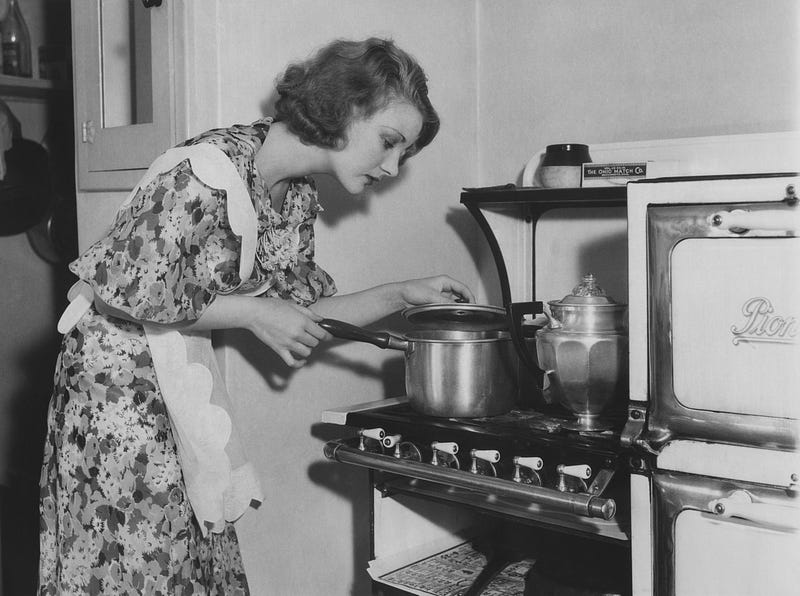
One pot pastas — just cook in reverse
This is one of my absolute favourites to make and couldn’t be more quick, delicious or easy if you tried.
To use only one pot for the entire meal, you must undress your meal from the final served plate — top down.
1. This means, toast the nuts or seeds that you sprinkle on top of your meal first over dry heat in the pot.
2. Then fry the onions, mushrooms, carrots — whatever it is you want to chuck into your pasta.
3. Remove your ingredients from the pot and place into your eating bowl and now make the sauce — either tomato based or white coconut or béchamel sauce (I’m sure there are loads others — these are my easy cooking favourites).
4. When your sauce is done add it to the eating bowls containing the sauce ingredients.
5. Boil the pasta in the same pot, potentially in water you may have already used for afore mentioned hard boiled eggs or corn (corn cooking water incidentally makes the pasta rather sweet!)
6. Drain the pasta water into a pot plant collection tub when the pasta is quite al dente, add your sauce and sauce goodies back to the pasta in the same pot and mix it all together.
7. Serve into your just used prep bowls and sprinkle with your toasted nuts and some cheese or nooch (nutritional yeast).
So no more dinner parties?
Well, this does use a fair amount of water for cook, prep and serving crockery and surface cleaning. It depends I guess if dishwashers are still connected to running tap water or how well you’re doing on your daily ration of 100 litres?
Fire side cooking, however, is calling
Eating around and straight off the fire is a simple pleasure. Veg or meat kebabs are easily prepped and cooked on the open flame and eaten under the stars. Your only utensil is the stick — burn it.
Drinking water
It’s wise to separate your drinking water, if only to know that you’re comfortably sorted for the day. With dam levels so low it is advised to boil the water but whether you buy into that is up to you. For super clean water:
– Decant 2l of water from your 25l drums (my daily drinking quota)
– Boil on the stove
– Leave to cool
– Decant into glass canisters with taps
– Add a Kuro-bo activated charcoal filter to be sure.
You can rest assured your water is clean and drinkable now.
Pets and water usage
I have two golden retrievers. They used to enjoy lavish lather up sessions on the lawn. Now? What lawn? The dogs get taken for the odd wash at the parlour (who are exempt from water restrictions). But you can also try this homemade waterless dog shampoo.
Their water intake however is your responsibility. Two active dogs this size need about 3l of water a day combined. Factor that in.
If you’re buying into the boiling of your own drinking water, you may want to look into whether this is necessary for dogs. I’m going under the assumption that their stomach acids are far stronger and that they don’t yet need boiled water.

How to be beautiful with less water
In the greater surviving-on-less-water scheme of things, this probably sounds rather frivolous. But, none the less, here are some things I’ve mulled over in my counting the drops experiment. Skip this bit if you’re a guy or the fortunate type who washes hair once a week.
Your lovely locks
If you’re fortunate enough to have jobs, you need to and like to look vaguely respectable. Some of us can’t go two days without washing hair before we begin to look like protesting tree huggers. And some of us have physically active careers. So, here’s how to keep hair cleaner on less water.
– Blow dry your hair — even oilier hair stays cleaner looking for longer that way.
– Consider waterless shampoo if you can skip a day of showering.
– Combing hair through with talcum powder also absorbs additional oil.
– Wash with shampoo only and use spray in conditioner to shorten shower times and rinse water required.
– A silk pillow case is another way of reducing your hair’s oil production while you sleep and stretching the clean hair look.
– Fan of headscarves? You can always embrace the 1950’s vintage, retro or boho look. Also, consider hats.

All lighthearted problem solving and proactive eventuality planning aside, water conservation is serious to the point of being grave. If you don’t yet see it that way, perhaps Robert Traydon’s vision of Day Zero — the day Capetonians run out of water — is the reality check you need.
My aim is to leave you feeling hopeful and empowered rather than disheartened.
Living this way has shown me that we can make do with less. More importantly it’s given me a deep appreciation and humility towards a resource that cannot sustain us if we don’t sustain ourselves.
Of course we all wish that our dams were overflowing with abundant, healthy water. But in the face of imminent shortages, anger will not serves us.
All we can do is apply ourselves to be practical and purposeful with our water consumption, appreciating every drop along the way. And maybe do the odd rain dance jigg when no one’s watching. Heck do it while they’re watching. They’ll probably join you.
Written by Andrea Fedder (also published on medium.com)
Instagram (@andreafedder)



KB
Posted at 04:24h, 02 JuneMost washing machines take about 40l-90l a load, you can google your make online to find out.
Andrea Fedder
Posted at 08:33h, 05 JuneYes, it is best to know your exact make before pursuing with the general guidelines. Good tip KB!
Peta Steyn
Posted at 19:02h, 03 JuneBuy an egg boiler. You can cook 7 eggs perfectly with about 25ml of water. Use stackable steaming pots and make lots of stews with a pressure cooker. Wear trousers 2 or 3 times if they didn’t get dirty and tumble towels so they dry better in the cool weather and don’t need frequent washing. Stretch washes on bedding by even one extra week longer than you normally do. Load your machine a bit heavier than normal with washing and always avoid half loads of washing.
Andrea Fedder
Posted at 08:32h, 05 JuneAn egg boiler is a great tip too – thanks Peta!
Diana Studer
Posted at 20:48h, 04 JuneMy front loader uses 66 litres and a top loader uses MUCH more.
Our tap water is still safe to drink without boiling. Sad to encourage people to boil water (and push us towards power loadshedding this winter) if it isn’t necessary.
Andrea Fedder
Posted at 08:30h, 05 JuneIt is sad indeed to require boiling water – but I think it becomes a personal judgement call on whether you feel it is necessary in your area depending on how your tap water tastes. For those cooking on gas it doesn’t place any strain on the grid.
Wendy
Posted at 12:52h, 21 JuneVery thoughtful article – only thing is my washing machine is a 13kg top loader and it uses 80L of water for a medium quick (eco) wash…. That’s a LOT of water! I do recycle the water for 3 loads of washing and it’s a back breaking job but I do it because we have to save water!